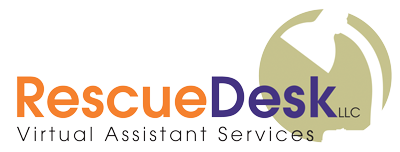3 WAYS TO KEEP THE PIPELINE FILLED WHEN YOU’RE BUSY
For almost 10 years, we’ve worked with small business owners who have given us a front-row seat in watching them push their organizations to the next level. It doesn’t matter if they are consultants, accountants, chiropractors, gallery owners, nonprofit directors or association managers, they almost always have one thing in common.
When they get busy onboarding new clients, servicing customers, thanking donors, or benefiting their members, one of the first things to fall of their to-do lists is keeping the pipeline filled for the next round of new clients, customers, donors or members.
I understand why it happens. Many of us – especially in service-based businesses – are careful about not taking on more than we can chew, otherwise we risk diluting the level of service provided to each individual client.
But, the result is then dealing with the “peaks and valleys” we all inevitably face.
When we’re scrambling to the top of the peak, we know we get one shot to make a good first impression. So, we spend an inordinate amount of time making sure every need of every new customer is satisfied, that expectations aren’t only met but are exceeded, and ultimately, we get busy doing the work they hired us to do.
But, then the valley hits. Whether big projects wind down, contracts unexpectedly fall through, or even normal client attrition, we find ourselves screaming down the back side of the mountain into the valley of lower revenues, fewer customers, missed opportunities, and stress-induced heartburn.
We’ve helped clients fight the good fight against making those peaks a little higher and the valleys a little less drastic, and it boils down to one simple thing.
Systems.
If you put systems in place to manage your marketing and sales efforts, you can scale your efforts up and down as needed without falling off the radar of your prospects. You still stay in front of them while you’re busy servicing current and new customers.
The key is to keep the systems simple.
It’s easy to get fired up about creating marketing or sales lifecycles that include dozens of initial steps and dozens more “what if” scenarios to manage all possible exceptions. But, the more complicated your system is, the more likely you are to ignore it at the first sign of an overburdened to-do list.
Instead, develop some basic systems to keep your pipeline flowing – even when you’re putting in long hours managing an influx of new business. The intent is to create a “slow burn” of activity so your pipeline doesn’t dry up completely.
1. Marketing & Sales
First, determine a few baseline marketing and sales strategies. These efforts need to balance the most bang for your buck AND are the least time-consuming to keep up with. It could be monthly email campaign, reaching out to a minimum number of individual contacts every week, committing to a certain number of networking events, ensuring your social media is managed and maintained every week, keeping up with a blog, or whatever else makes the most sense for your client base.
Remember, you can (and should!) add sales and marketing initiatives when you aren’t neck-deep in a busy business cycle. But try to commit to just a few easy-to-implement and easy-to-maintain strategies that creatively showcase your company, but are also process-driven. These strategies should only include a few simple steps, and they shouldn’t have you reinventing the wheel every time.
Invest in technology that can help you quickly track and automate, or develop a few simple marketing processes, document the steps, then hand it over to someone else to implement. Then your role is reduced even more. You will still benefit from maintaining a presence in the market, but your focus can remain on your new customers and driving revenue.
2. Referral programs
Do you have a simple system to ask for referrals?
Incorporate it as a single step or two in your onboarding process, or roll it into your standard client lifecycle. It could be as simple as when a certain milestone is achieved or a specific amount of time has passed, you send a few-questions survey to secure a testimonial.
Or develop a script to use as part of your “post mortem” once a project is completed to ask who else could benefit from the type of expertise you provide. One step, one question, more cool people to roll into your “baseline” strategies mentioned above.
3. Onboarding and Client Services
Look at your onboarding process for new clients, donors or members. What can be broken down into a system so onboarding is more efficient?
Are there questions that always need to be answered? Specific pieces of information you always need to request? Is there information you always need to provide about your policies and procedures? How much customization do you really need for each piece of client documentation?
Package it all up into a single, formatted point of reference. Some simple and streamlined onboarding and client-services steps will save you administrative time, so you can more quickly move to providing your true value, which is in the service you provide.
Building systems and processes isn’t always easy, and admittedly, isn’t always fun (unless you’re process geeks like us!). It’s easy to get hung up on the exceptions, or worry about keeping up with it. But, if you keep it simple and documented, your sales and marketing efforts will be easily scalable when you need it most.
